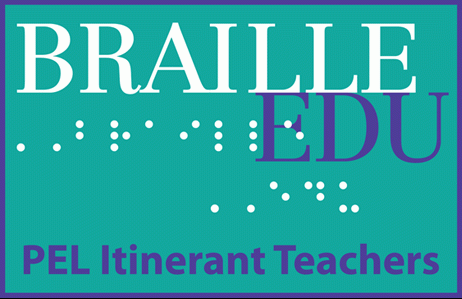Importance of Pre-Braille Skills:
Pre-braille skills and experiences presented to the child who has a visual impairment, will foster and strengthen the basic learning foundation throughout their lives. Children are naturally curious to learn about their environment, when we expose them to what is around them. They need parents, teachers and educators to provide every opportunity to explore their world.
Children who require distance education of pre-braille skills and braille instruction can receive support through their Vision Itinerant Teacher, who will work with the teacher’s aides, resource teachers and class teachers that are assigned to them. The itinerant teacher will need to make occasional visits to work with the staff and student, as the child progresses in their individual learning.
The young learner will need to develop awareness of their environment. Teachers can support the development of motor skill, tactile skills and concepts about texts. Young children will need to learn to sit, listen and comprehend what is being presented to them.
Children learn by doing an activity, which helps them to develop their kinesthetic and sensory learning. They need direct, concrete experiences with objects and situations in their immediate environment, i.e., playing in the school yard, exploring in the sand box, interacting with water toys, touching a variety of fruit in a basket, exploring; eating utensils, shapes and toys that they play with.
Providing the child with the realistic object allows the physical experience and to be enhanced and memorable. The child can smell, touch, hear and see as much as the residual vision permits, e.g. holding an apple, smelling it and putting it to the mouth as if to eat it.

Scanning and Organization
Children learn to scan and explore what is being shown by initially working hand-over-hand with the teacher; moving their hands from the left side of the table to the center and then to the right side to find the object(s) that is being introduced. This can be repeated by returning to the lower left side, for continued exploration.
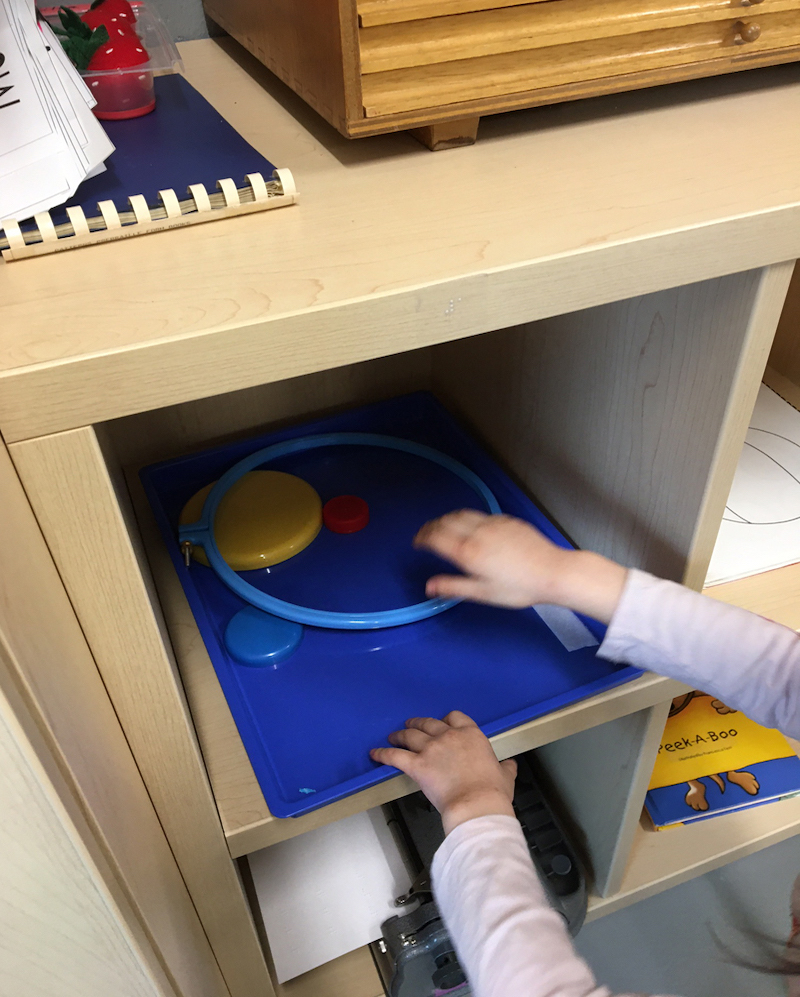
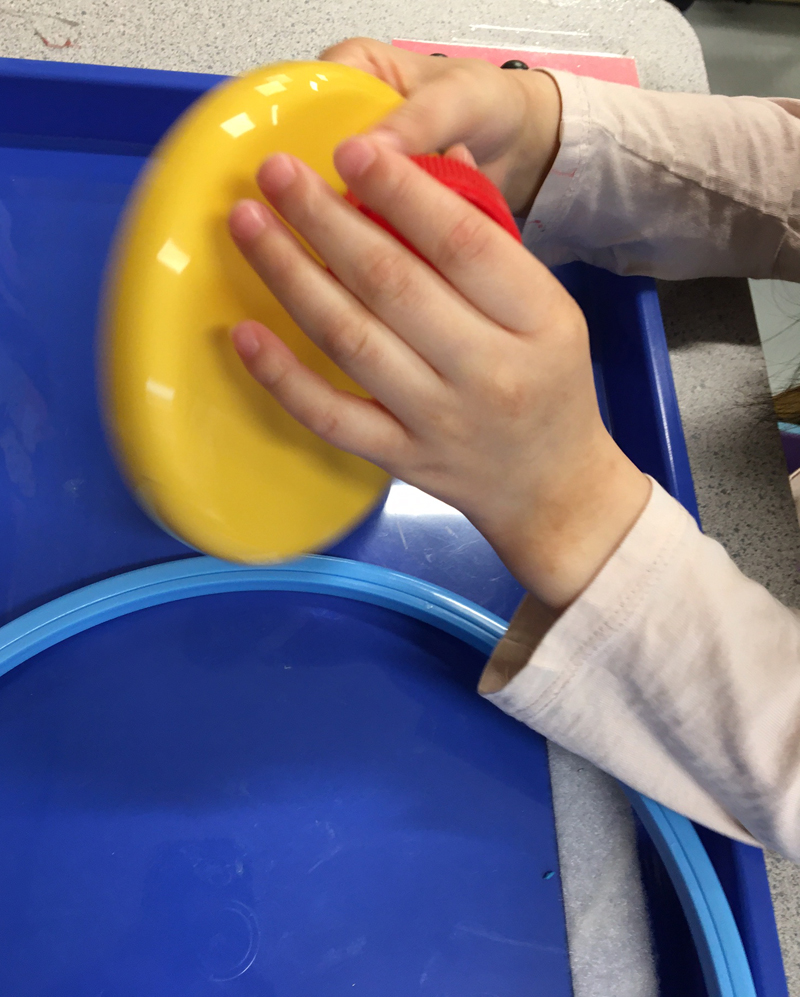
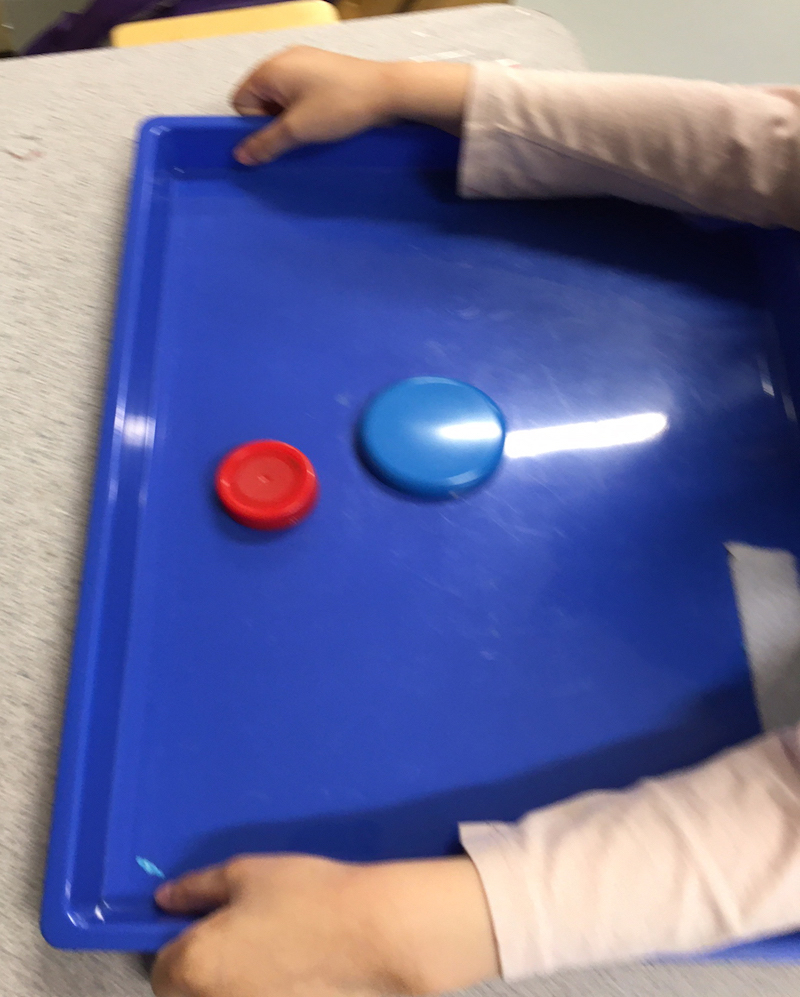
For example, a circle shape can be placed in the center of a rectangular tray. The teacher can work hand-over-hand moving from left to right, to locate the shape(s) presented. Now it is time for exploration of the shape.
This type of activity can be elevated by including additional circles in varied sizes, presented across the table, that are laid out on the table from left to right. The task would be to scan from left to right, using both hands and locate the new shapes.
Organization is key in all activities presented, whether at the early Pre-Braille learning stages or as the student evolves into a tactile learner, when reading and writing in Braille. Sighted children use their vision to scan and locate items, but visually impaired learners need to develop organizational skills to understand location of the item(s), as well as to return the item(s) to its original place. This is important as a young learner needs to know where to locate objects when needed, i.e., cutlery in a kitchen is kept in a drawer, until it is time to set the table and have a meal. A child can locate the cutlery, as it remains in a specific space. These organization and scanning skills are needed in all areas of learning; daily living skills, social interactions; academic and non-academic learning.
When introducing organizational type skills, keep in mind that the vocabulary used should provide solid directions and spatial awareness. Some of this vocabulary is as follows: left-right, top-left, top-right, bottom-left, bottom-right, center. With consistent practice, guidance from the adult and use of the appropriate vocabulary the student will learn how to locate items and their placement at their table. For example, presenting a series of items needed to complete an art activity, all items needed should be placed in an order on the table; first for exploration and explanation, then for retrieving the needed item to complete the task.
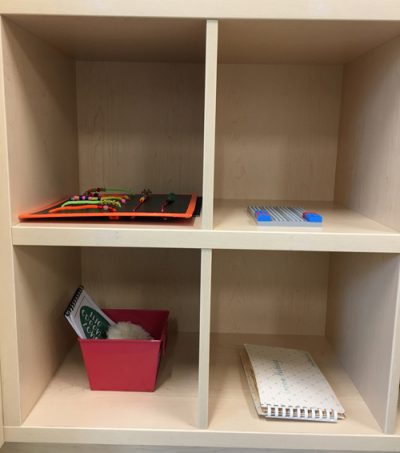
Here the student has been presented with her working cubbies to complete the 4 tasks. Introduction of the 4 cubbies has been shown. The student is aware that cubby 1 is on the top left, cubby 2 on the top right, cubby 3 on the bottom left, and cubby 4 on the bottom right. The student has been presented with the various activities in each of the cubbies. This previous knowledge allows the student to complete each task.
